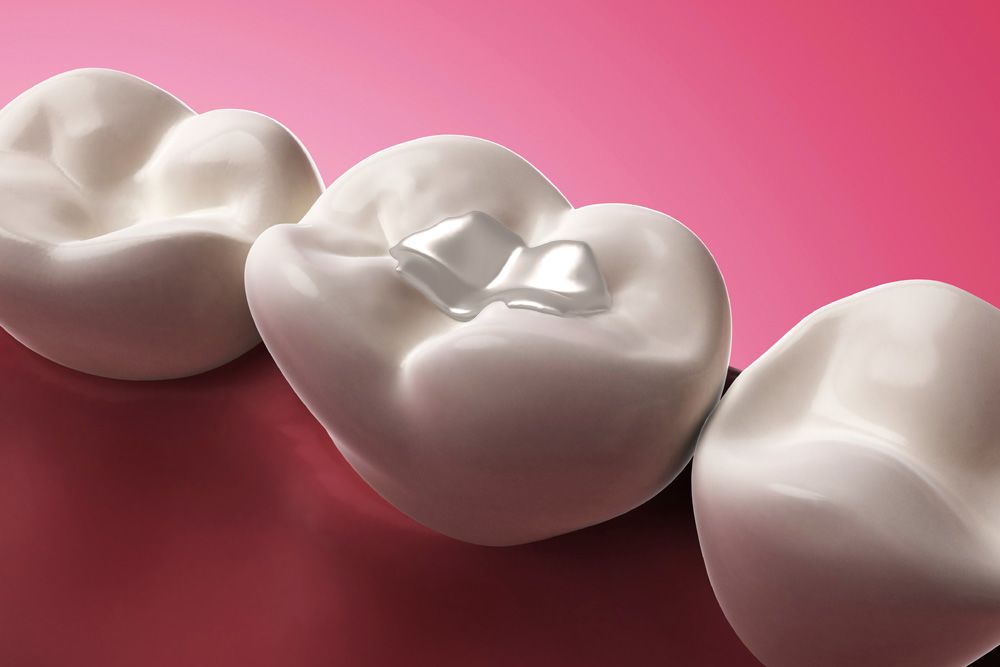Repairing Damaged Teeth with Tooth-Colored Dental Fillings
Tooth-colored dental fillings can repair teeth damaged by cavities, protecting them from further decay and avoiding the need for more costly, complex treatment. Dr. Bruce Watkins at Watkins Family Dentistry in Elkhart, IN, prefers to place tooth-colored fillings. Compared to silver amalgam fillings, composite restorations look more natural, and are also more conservative and durable.
How Cavities Form
Cavities are caused by plaque, which is a by-product of bacteria breaking down food that has remained on the surface of the teeth. Plaque is acidic, and will eventually eat away at the enamel protecting your teeth, creating soft spots. Cavities occur when the tooth's protective outer layer breaks down beyond the body's natural ability to repair it.
Identifying and treating cavities as soon as possible is essential to preventing further decay and damage to your teeth.
You may have a cavity if you are experiencing a toothache or dental sensitivity, especially when eating or drinking something hot, cold, or sugary. It is important to have regular dental checkups, as many patients with cavities will notice few or no symptoms. Identifying and treating cavities as soon as possible is essential to preventing further decay and damage to your teeth.
The Purpose of Dental Fillings
A filling is used to repair the affected area of the tooth, and also prevent the decay from reaching the root, where it can cause more serious infection. Fillings preserve the healthy portion of the tooth, limiting the treatment to only the decayed portion. This leaves the structure and the form of your natural tooth intact.
Mild to moderate tooth decay can typically be treated with a filling. However, more severe forms of tooth decay may need to be treated with a different procedure, such as an inlay or onlay, dental crown, or root canal therapy. Dental fillings can also be used in cases of small chips or cracks.

Placing Tooth-Colored Fillings
Dr. Watkins places tooth-colored fillings, which have many advantages as opposed to amalgam fillings traditionally placed by dentists. Tooth-colored fillings are made from composite resin, a mixture of ceramic and acrylic, blended to match the natural shade of the tooth. Along with improving the tooth’s appearance, tooth-colored composite fillings:
- Are free of toxins. Amalgam fillings are known for their trace amounts of mercury that concern many patients.
- Cause no darkening to the teeth or gum line.
- Require less enamel removal.
- Do not expand or contract with changes in temperature, reducing stress to your teeth.
Before performing the filling, Dr. Watkins will administer anesthesia and numb the area around the tooth to minimize discomfort during the procedure. Additional methods of sedation are available for especially nervous patients. Next, the decayed material will be removed from the tooth, and it will be cleaned thoroughly. Once this is complete, Dr. Watkins will fill the cavity left by the removal of the unhealthy portions of the tooth with the tooth-colored composite resin. Composite resin requires delicate molding and precise techniques to provide optimal results. In between each layer, Dr. Watkins will use a special curing light to harden the resin. This reinforces the structural integrity of the tooth and restores complete dental function. Finally, the tooth will be polished and trimmed to ensure a comfortable bite and natural-looking appearance.
Schedule an Appointment
It is extremely important to identify and address cavities before any further damage is caused to your oral health. To schedule an appointment, call our office at (574) 293-9832 or fill out our online form and our team will get back to you shortly.


